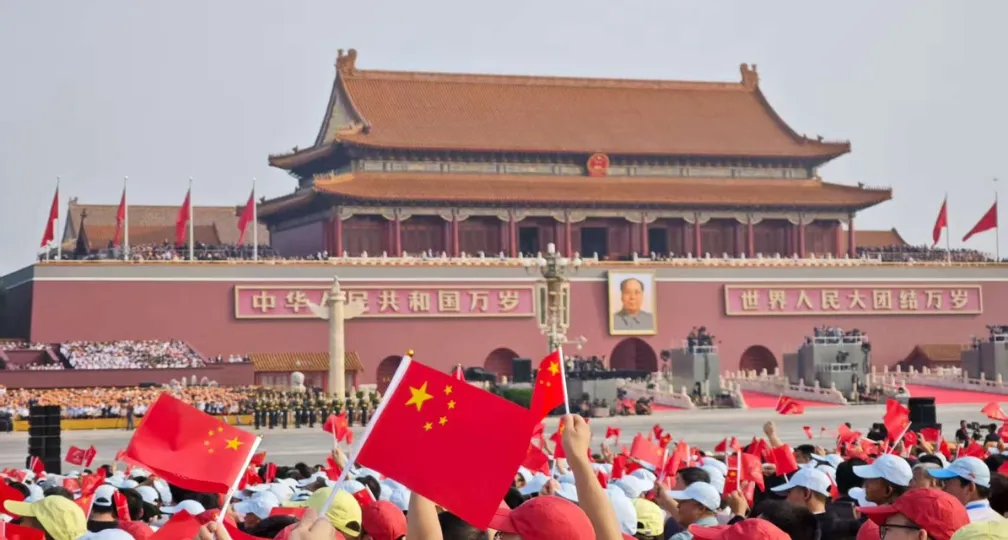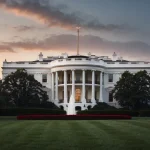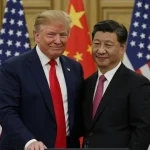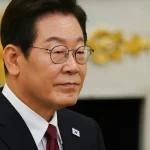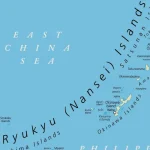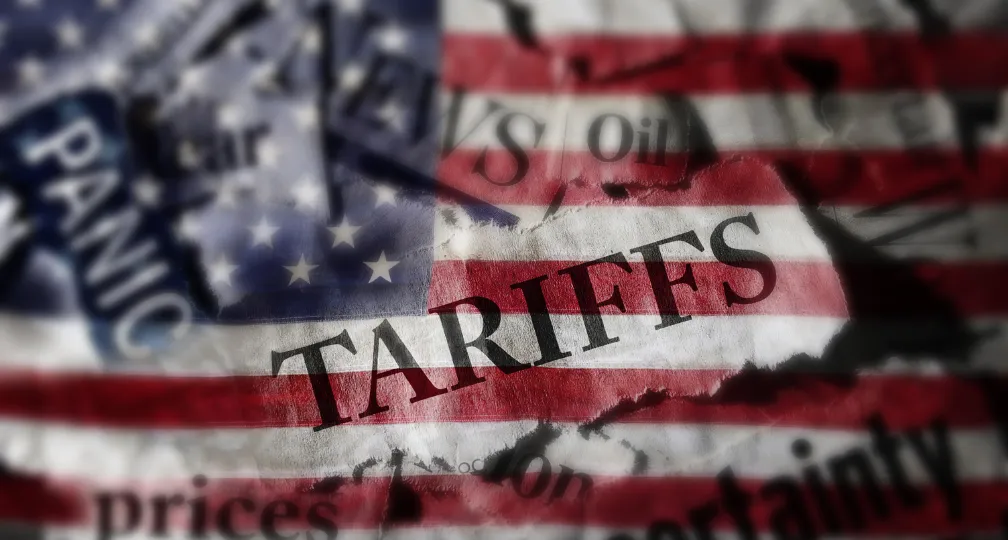Tariffs, Inflation, and Growth: The US Economy in Uncharted Waters
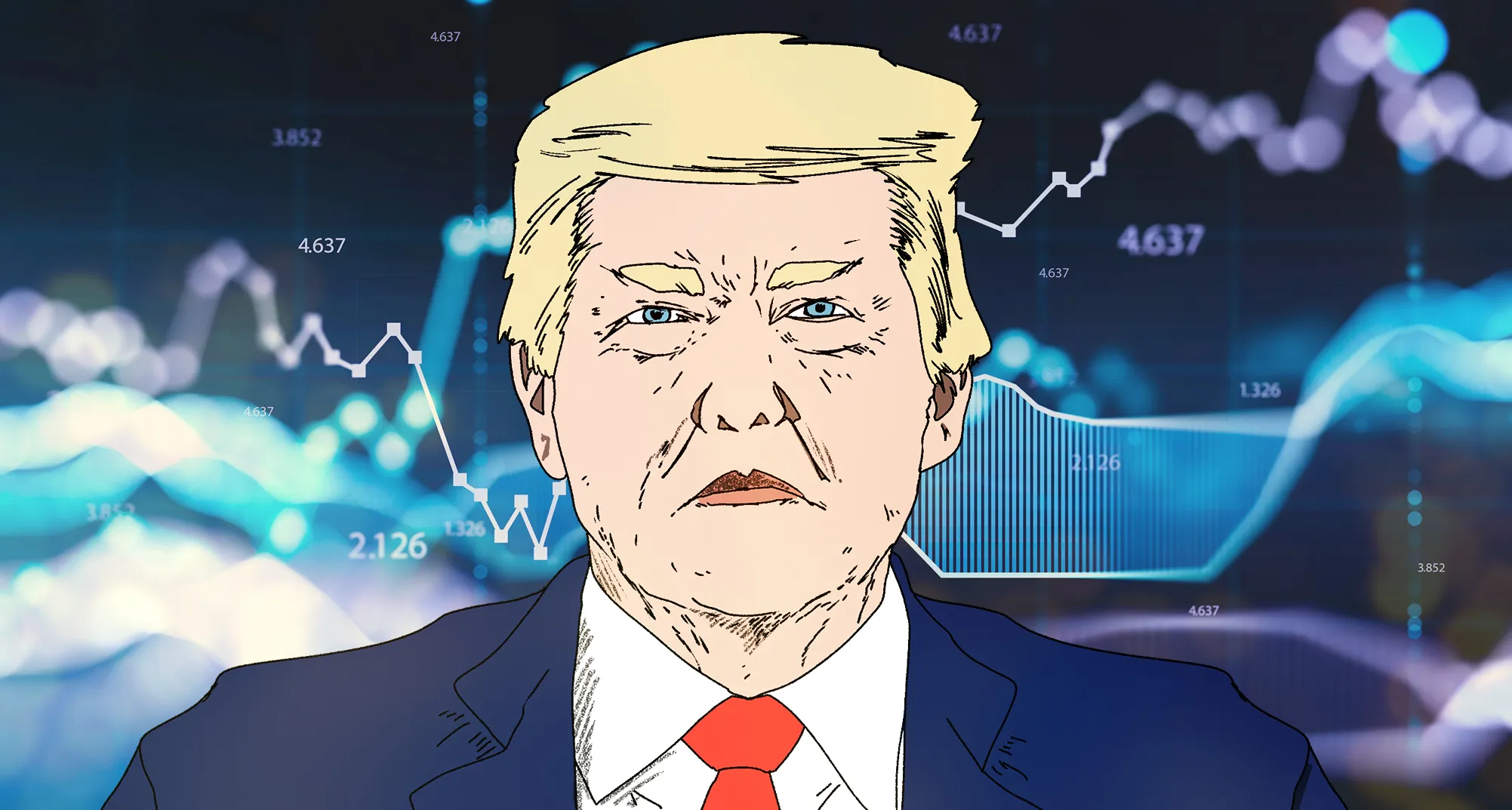
The latest regulatory developments on economic security & geoeconomics
By Paul Nadeau, Visiting Research Fellow, Institute of Geoeconomics (IOG)
China-U.S. Trade War Pause: China and the United States announced an extension of their trade truce for 90 days shortly before the previous truce expired on August 12. The new pause will remain in place until November 10, during which U.S. tariffs on Chinese imports will remain at 30 percent and Chinese tariffs on U.S. imports will remain at 10 percent. A statement from the White House said that an extension would give more time for negotiations on remedying trade imbalances.
Japan Gets Clarity on Tariff “Stacking”: Ryosei Akazawa, Japan’s Minister of State for Economic and Fiscal Policy, confirmed that Japan’s tariff levels would not be “stacked”, where a tariff of 15 percent would be added to existing tariff levels resulting in higher total tariffs, rather than total tariff levels of 15 percent. Akazawa blamed the confusing on a “regrettable error” and explained that the Trump administration would issue a new executive order that would correct the tariff levels.
Trump: No Secondary Sanctions on Russian Oil for Now: Following his meeting with Russian President Vladimir Putin in Alaska on August 15, U.S. President Donald Trump said that he would not impose new sanctions on Russia or its trading partners such as China, though he did not take the possibility off the table. Prior to the Alaska meeting, Trump had threatened sanctions on Russia and other countries that buy Russian oil if no progress was made on negotiations over the war in Ukraine. Earlier in August, Trump had announced that a 25 percent tariff on imports from India that would go into effect on August 31 due to India’s purchases of Russian oil.
Chipmakers Agree to Share Revenues with Trump Administration: Nvidia and AMD agreed to pay the U.S. government 15 percent of their revenues from their sales of their H2O chips and MI308 chips, respectively, in China in order to obtain an export license to China’s market. This is the first time that U.S. companies have agreed to pay part of their revenues to obtain export licenses. Nvidia’s H2O’s chip was originally tailored for China’s market to avoid U.S. export controls during the Biden administration.
U.S. Raises Countervailing Duties on Softwood Lumber: The U.S. Commerce Department’s International Trade Agency (ITA) announced on August 8 that it would raise countervailing duties on Canadian softwood lumber from 6.74 percent to 14.63 percent. In addition to the increase in anti-dumping duties on Canadian softwood lumber, the total U.S. duties on softwood lumber from Canada are now 35.19 percent and an ongoing Section 232 investigation into the national security implications of softwood lumber imports may raise duties further. Canada and the United States are in ongoing trade talks on Trump’s 35 percent tariffs on non-USMCA compliant goods.
U.S. Sanctions Iran UAV Manufacturers: On July 31, the U.S. Treasury Department’s Office of Foreign Assets Control (OFAC) designating five entities and one individual based in Iran, Hong Kong, Taiwan, and China for their procurement of technology in support of OFAC-designated Iran Aircraft Manufacturing Industrial Company (HESA), a UAV manufacturer who products have been used by Iran’s Revolutionary Guard (IRGC). As a result of the announcement, all property and interests in property of the designated or blocked persons described above that are in the United States or in the possession or control of U.S. persons are blocked and must be reported to OFAC.
U.S. Targets Iran Sanctions Evasion: On August 7, the U.S. Department of the Treasury’s Office of Foreign Assets Control (OFAC) is designating 18 entities and individuals involved with the RUNC Exchange System Company, also known as RUNC International Banking Solutions (RUNC), for its role in developing Iran’s Cross-Border Interbank Messaging System (CIMS), a bank messaging system designed to allow Iran and its allies to circumvent controls in place on more commonly used payment systems like SWIFT. Sanctions were also placed on the Cyrus Offshore Bank and the Pasargad Arian Information and Communication Technology Company (FANAP) which provide financial security services.
Analysis: Tariffs, Inflation, and Growth: The US Economy in Uncharted Waters
By Andrew Capistrano, Visiting Research Fellow, Institute of Geoeconomics (IOG)
Are tariffs inflationary? This question carries enormous significance for the US economy, given that President Trump’s trade policies have pushed tariffs to their highest level since 1933. At the start of 2025, the effective US tariff rate was around 2.5%, which in April surged to approximately 27% following the imposition of “reciprocal tariffs” on all US trading partners. Now that the Trump administration has reached trade agreements with several major economies, including the EU and Japan, the average effective tariff rate has declined to around 18%—still, this remains very high by historical standards.
Yet contrary to the expectations of most professional economists, inflation in the US has so far been muted. In July the headline consumer price index (CPI) rose 2.7% year-on-year, core CPI 3.1% year-on-year, and import prices 0.4% month-on-month. Such data suggests that in the aftermath of “Liberation Day” imported inflation was surprisingly mild. Indeed, much of the inflationary pressure in the US economy can be traced to the services, healthcare, food, and fuel sectors, which are largely unaffected by tariffs.
There are several conventional explanations for this. First, price increases may not have been passed through to consumers yet. July’s producer price index (PPI) increased 0.9% month-on-month and 3.3% year-on-year (the highest since February), raising concerns that these upstream pressures will eventually hit consumers. Second, businesses and exporters may still be absorbing tariff costs; Goldman Sachs analysts suggest that as of June only 22% of these costs were being passed on to consumers, while at the same time they warned this could rise to 67% by October. Third, some economists agree with Treasury Secretary Scott Bessent, who argues tariffs may cause a one-time price shock but cannot sustain a higher rate of inflation absent loose monetary policies that increase the money supply.
Bessent actually claims that tariffs are deflationary, citing the case of Trump’s first-term trade war with China. Since Trump’s tariffs have no modern precedent, this is the best case study one can turn to for insights, and it is true that six months after imposing the China tariffs in 2018, US inflation halved from 3% to 1.5%. But there is a key difference between then and now, one that could determine the impact of Trump’s second-term, much more expansive tariff gamble.
Inflation is at present a political poison pill. The pandemic-era price surge not only damaged the US economy, it also hurt the Biden administration politically. Thus it is understandable why Bessent wants to downplay the potential inflationary effects of Trump’s trade policies. However, inflation is not monocausal—and it is not always a bad thing. It is important to point out that the cost-push inflation of the pandemic should be distinguished from the type of inflation that Trump’s trade policies are more likely to produce in the current environment: demand-pull inflation, driven by economic growth.
To understand why, consider what happened in 2018. While Trump’s China tariffs did raise prices for some goods, for other goods they caused prices to fall. This is because tariffs do not increase overall income in the economy—so consumers bought less of some goods and more of others. After all, what are tariffs? Leaving aside Trump’s penchant for using them to create bargaining leverage or increase government revenues, tariffs are effectively a tax on domestic consumers that reduces their real incomes, in order to subsidize domestic producers by improving their competitiveness against foreign exporters. In short, the point of tariffs is to cause production to rise relative to consumption.
If there is no growth in production, however, tariffs can cool demand and tighten financial conditions, making them disinflationary. And most studies suggest that the China tariffs caused US GDP to decline around 0.25% from 2018 to 2019. If Trump’s costly tariff policies failed to stimulate growth in his first term, the fact inflation was also halved seems to be no cause for celebration.
From this standpoint, the deeper problem with the 2018 tariffs on China is that they were not accompanied by parallel domestic investment incentives, and therefore Trump’s aim of using them to reshore US production failed. Put simply, besides consumption, the only other form of demand is investment. Since tariffs reduce consumption, once they are imposed economic growth will be fundamentally dependent on an investment surge to sufficiently offset them.
In 2018, the net effect was disinflationary for the US economy due to a decline in both forms of demand—consumption and investment—that sapped growth, and likely hurt the US economy more than China’s. Moreover, Chinese producers either lowered prices to maintain market share, transshipped their exports through third countries in order to evade the tariffs, or took advantage of the fact that the RMB depreciated around 12% against the dollar during the trade war. In any event, the 2018 tariffs did not lead to Trump’s stated goal of domestic reindustrialization.
By contrast, the 2025 tariffs are part of a far broader disruption of the global trading system. On the one hand, by targeting all US trading partners rather than just China, the emerging trade regime includes provisions to limit transshipment (such as in the US-Vietnam agreement, where transshipped Chinese goods receive a 40% tariff, double the rate on Vietnamese goods). On the other hand, so far Trump’s disruption has had the opposite effect on the dollar: in 2018, it strengthened by 10%, while in 2025 it has instead weakened by 10%, its worst year since 1973. These factors alone suggest a more severe effect on US consumers this time.
Even so, headline tariff rates do not tell the whole story. Excluding oil, imports of goods make up around 12% of US GDP, but there are many exemptions that reduce the US exposure by roughly half. Imports from Canada and Mexico (about 3% of US GDP) are mostly exempt due to the USMCA, as are imports of electronics and pharmaceuticals (a combined 2% of GDP). And in the US trade agreements with Japan, the EU, and South Korea the 25% Section 232 (national security) tariffs on autos have also been reduced to 15%. Nevertheless, even by Trump’s own metrics the costs are significant: the US has brought in $121 billion in tariff revenue in the fiscal year, including $27 billion in June alone. It seems unlikely that exporters and businesses will continue to absorb these costs in the medium term.
The key question is whether or not Trump’s tariffs can produce growth. Hence, it is critically important that this time they are being paired with investment incentives. Bessent and others in the administration have made it clear that their focus is on US reindustrialization via strategic investment, and several channels are being mobilized.
Some financing will come from the government. The Office of Strategic Capital (OSC) can leverage $200 billion in lending capacity from just $1.5 billion in appropriations, due to an accounting change in the “One Big Beautiful Bill”. Notably, OSC recently provided funding for MP Materials, a Nevada company operating the Mountain Pass mine—the only US rare earth processing facility. The International Development Finance Corporation (DFC) is also being reshaped into a “private equity-style” sovereign wealth fund vehicle with hundreds of billions in potential capacity, pending a crucial reauthorization vote in October. Another funding source is private firms, such as from the boom in capital expenditure commitments from US and foreign companies, incentivized by tariffs, defense spending, and AI data center needs.
More radical is the explicit linkage between trade, foreign, and industrial policies. Trump has secured FDI pledges worth at least hundreds of billions (although the administration has optimistically stated it will be “multi-trillions”) of dollars extracted through economic diplomacy (with Saudi Arabia, the UAE, and Qatar) and trade agreements (with Japan, the EU, and South Korea). There is also the unorthodox use of CFIUS to generate revenues in exchange for allowing certain economic activities. The CFIUS-extracted funds include Nippon Steel’s $14 billion investment commitment in US Steel, as well as Nvidia and AMD’s agreement to give the US government 15% of the revenue obtained from selling the advanced H20 and MI308 chips to China.
Finally, Trump signed a number of Executive Orders to cut regulations and expedite strategic projects, including the America First Investment Policy and the planning for a US sovereign wealth fund. Interestingly, in an August interview Bessent said that US trading partners would “invest in companies and industries […] largely at the President’s discretion”, which would essentially provide the US with a “sovereign wealth fund” for reshoring “critical industries”. The host, Trump’s first-term Director of the National Economic Council Larry Kudlow, appeared stunned, and called this arrangement an “offshore appropriation”.
Despite the tariff headlines, there appears to be a shift of potentially greater long-term importance behind the Trump administration’s trade policies. These investment commitments from firms and governments, both domestic and foreign, make the 2025 program far more sophisticated than the more narrow 2018 tariffs on China.
Still, unlike the increased tariff rates, these investments will take time to materialize. For instance, questions remain regarding how US trading partners interpret their “investment commitments” in the trade agreements. This suggests a near-term slowdown in US growth before the investment flow begins to reverse the drag. However, there is reason to suspect that the fiscal effect of these investments will be far stronger than is currently anticipated. Even $200 billion in near-term investment would dwarf any consumption drag from the tariffs. But if OSC’s lending capacity, DFC’s transformation, and the FDI commitments are fully manifested, there could be a strategic investment surge of more than $1 trillion.
For this reason, tariffs are unlikely to be deflationary as they were in 2018. At first, prices will rise as the costs are passed through to consumers. And if massive domestic investments follow, the result will be a growth boom, accompanied by heightened inflation. Yet demand-pull inflation due to growth is not the same as cost-push inflation from fiscal and monetary stimulus—which does not not produce corresponding growth. As the US economy enters uncharted waters, it will be useful to keep this distinction in mind.
Disclaimer: The views expressed in this IOG Economic Intelligence Report do not necessarily reflect those of the API, the Institute of Geoeconomics (IOG) or any other organizations to which the author belongs.
API/IOG English Newsletter
Edited by Paul Nadeau, the newsletter will monthly keep up to date on geoeconomic agenda, IOG Intelligencce report, geoeconomics briefings, IOG geoeconomic insights, new publications, events, research activities, media coverage, and more.



Visiting Research Fellow
Andrew Capistrano is Director of Research at PTB Global Advisors, a Washington DC-based geopolitical risk consulting firm. Specializing in economic competition between the US/EU and China, he analyzes how trade, national security, and industrial policies impact markets, and his firm’s clients include Japanese corporations and government agencies. He previously worked in Tokyo at the US Embassy’s American Center Japan and as a research associate at the Rebuild Japan Initiative Foundation / Asia-Pacific Initiative. Dr Capistrano holds a BA from the University of California, Berkeley; an MA in political science (international relations and political economy) from Waseda University; and a PhD in international history from the London School of Economics. His academic work focuses on the diplomatic history of East Asia from the mid-19th to the mid-20th centuries, applying game-theoretic concepts to show how China's economic treaties with the foreign powers created unique bargaining dynamics and cooperation problems. During his doctoral studies he was a research student affiliate at the Suntory and Toyota International Centres for Economics and Related Disciplines (STICERD) in London.
View Profile
Visiting Research Fellow
Paul Nadeau is an adjunct assistant professor at Temple University's Japan campus, co-founder & editor of Tokyo Review, and an adjunct fellow with the Scholl Chair in International Business at the Center for Strategic and International Studies (CSIS). He was previously a private secretary with the Japanese Diet and as a member of the foreign affairs and trade staff of Senator Olympia Snowe. He holds a B.A. from the George Washington University, an M.A. in law and diplomacy from the Fletcher School at Tufts University, and a PhD from the University of Tokyo's Graduate School of Public Policy. His research focuses on the intersection of domestic and international politics, with specific focuses on political partisanship and international trade policy. His commentary has appeared on BBC News, New York Times, Nikkei Asian Review, Japan Times, and more.
View Profile-
 Is China Guardian of the ‘Postwar International Order’?2025.12.17
Is China Guardian of the ‘Postwar International Order’?2025.12.17 -
 Japan-India Defense in a Fragmenting Indo-Pacific2025.12.10
Japan-India Defense in a Fragmenting Indo-Pacific2025.12.10 -
 The “Economic Security is National Security” Strategy2025.12.09
The “Economic Security is National Security” Strategy2025.12.09 -
 India - Japan: The Glimpse of a Shared Vision2025.12.05
India - Japan: The Glimpse of a Shared Vision2025.12.05 -
 Beijing’s ‘Globalist’ Agenda Under Trump 2.02025.12.01
Beijing’s ‘Globalist’ Agenda Under Trump 2.02025.12.01
 Event Report: The Trump Tariffs and Their Impact on the Japanese Economy2025.11.25
Event Report: The Trump Tariffs and Their Impact on the Japanese Economy2025.11.25 The “Economic Security is National Security” Strategy2025.12.09
The “Economic Security is National Security” Strategy2025.12.09 The Real Significance of Trump’s Asia Trip2025.11.14
The Real Significance of Trump’s Asia Trip2025.11.14 The long road to a South Korea-U.S. trade deal2025.11.26
The long road to a South Korea-U.S. trade deal2025.11.26 The Tyranny of Geography: Okinawa in the era of great power competition2024.02.09
The Tyranny of Geography: Okinawa in the era of great power competition2024.02.09


